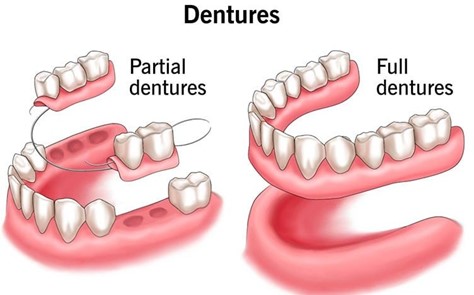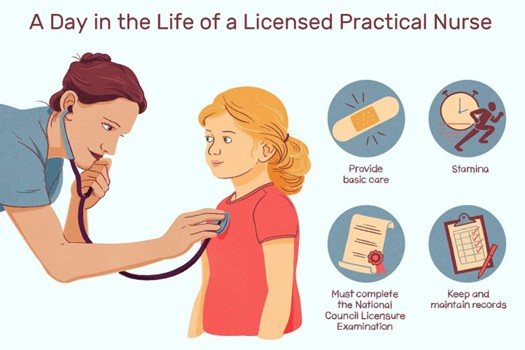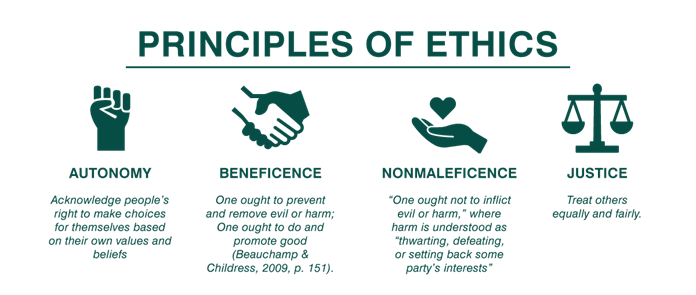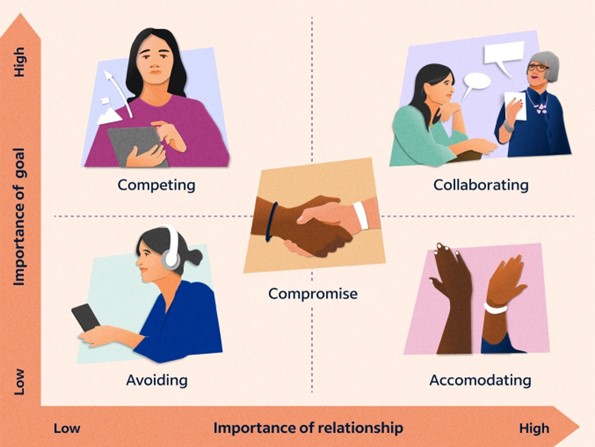PN Medical Surgical Leadership
ATI PN Medical Surgical Leadership
Total Questions : 51
Showing 10 questions Sign up for moreA nurse is caring for several clients on a medical-surgical unit. Which of the following client care situations requires the nurse to complete an incident report?
Explanation
An incident report should be filed whenever an unexpected event occurs. The rule of thumb is that any time a patient makes a complaint, a medication error occurs, a medical device malfunctions, or anyone— patient, staff member, or visitor—is injured or involved in a situation with the potential for injury, an incident report is required ⁴. In this case, the client's missing dentures would be considered a complaint and would require the nurse to complete an incident report.
The other options do not require an incident report. Disagreeing with the nurse manager about inadequate staffing [a], a staff member not arriving at the facility to work an assigned shift [b], and discovering that the client does not have advanced directives [d] are not situations that would require an incident report according to the information provided in my sources.

The best source of information regarding the roles of the LPN in a med-surg setting is:
Explanation
The State Board of Nursing is responsible for regulating the practice of nursing within a specific state. It establishes the scope of practice for LPNs and sets the standards for their education, licensure, and practice. Therefore, the State Board of Nursing would be the best source of information regarding the roles of an LPN in a med-surg setting.
The other options may provide some information about the roles of an LPN in a med-surg setting, but they are not the primary source. The facility Human Resources Department [a] may have information about job descriptions and responsibilities specific to that facility. Nursing textbooks [c] may provide general information about the roles of LPNs. Coworkers on your unit [d] may have personal experience and knowledge about the roles of LPNs in that specific unit, but their information may not be comprehensive or up-to-date.

Doing no harm is?
Explanation
Nonmaleficence is the ethical principle of doing no harm. It requires healthcare providers to avoid causing harm to their patients and to take steps to prevent harm from occurring.
The other options are also important ethical principles in healthcare, but they do not specifically refer to doing no harm. Justice [a] refers to the fair distribution of benefits and burdens in society. Beneficence [c] refers to the obligation to do good and promote the well-being of others. Veracity [d] refers to the obligation, to tell the truth and not deceive others.

A nurse is assigning tasks for the upcoming shift. Which of the following tasks should the nurse delegate to assistive personnel (AP)? (Select all that apply.)
Explanation
The correct answers are Choices A, D, and E.
Choice A rationale:Providing postmortem care to a client who has just passed away is a task that can be delegated to assistive personnel (AP). Postmortem care involves cleaning and preparing the body after death and is not a task that requires the specialized skills or judgement of a nurse. It is important to note that while the physical task of postmortem care can be delegated, the nurse is still responsible for providing emotional support and information to the family, coordinating with the morgue or funeral home, and completing any required documentation.
Choice B rationale:Instructing a client about the use of a spirometer is not a task that should be delegated to assistive personnel. Patient education requires assessment and evaluation of the patient’s understanding, which are nursing responsibilities. A spirometer is a medical device used to measure lung function and is often used after surgery to help prevent complications like pneumonia. Proper use of the spirometer is crucial to its effectiveness, so it is important that the instruction is clear and understood by the patient.
Choice C rationale:Suctioning a client’s newly inserted tracheostomy is not a task that should be delegated to assistive personnel. Tracheostomy care, especially suctioning, requires specialized skills and knowledge, as well as the ability to assess the patient’s respiratory status. Improper suctioning can cause trauma to the trachea, hypoxia, or infection. Therefore, this task should be performed by a nurse or other licensed healthcare professional.
Choice D rationale:Transferring a client to radiology for x-rays is a task that can be delegated to assistive personnel. This task involves physical assistance and does not require specialized nursing skills or judgement. However, the nurse should provide the AP with any necessary information about the patient’s condition, mobility, and any precautions that need to be taken during the transfer.
Choice E rationale:Performing a simple dressing change on a client’s arm is a task that can be delegated to assistive personnel. This task involves changing the bandages on a wound, which is a task that does not require specialized nursing skills or judgement. However, the nurse should ensure that the AP has been properly trained in dressing changes, understands the importance of infection control, and knows when to report any changes in the wound’s appearance.
What is a nurse's best protection against negligence or malpractice?
Explanation
A nurse's best protection against negligence or malpractice is to follow the standards of practice. These standards define the acceptable level of care that a nurse is expected to provide and are based on current evidence and professional consensus. By adhering to these standards, a nurse can demonstrate that they have provided care that meets the expected level of quality and safety.
The other options are not the best protection against negligence or malpractice. Asking permission from the managing nurse prior to performing any duties [a] may be helpful in some situations, but it is not a guarantee against negligence or malpractice. Never being alone with a patient [c] is not practical or necessary for providing safe and effective care. Recording patient interactions with your phone [d] may violate patient privacy and is not an effective way to prevent negligence or malpractice.
A nurse is delegating tasks to an assistive personnel (AP). Which of the following tasks should the nurse assign to the AP?
Explanation
Assistive personnel (AP), also known as unlicensed assistive personnel (UAP), can perform tasks such as recording vital signs ¹. Obtaining vital signs on clients who are stable [d] is a task that can be delegated to an AP.
The other options are not tasks that should be delegated to an AP. Assisting the client to select a low-residue diet [a] and reviewing the steps of self-blood glucose monitoring with a client [c] involves patient education and dietary planning, which are typically the responsibility of a licensed nurse. Performing a complex dressing change [b] is a complex task that requires specialized knowledge and skills.
A nurse observes two assistive personnel (AP) arguing over who should go on break first. The nurse interrupts the conversation and states that one AP can take a break now, but the other AP will get to take an early lunch. Which of the following types of conflict management is the nurse demonstrating?
Explanation
In this situation, the nurse is demonstrating the compromising style of conflict management. Compromising involves finding a middle ground where both parties give up something in order to reach a mutually acceptable solution. In this case, the nurse suggests that one AP can take a break now, but the other AP will get to take an early lunch. This solution allows both APs to have some of their needs met while also making concessions.
The other options are not the type of conflict management demonstrated by the nurse in this situation. Cooperating [a] involves one party giving in to the demands of the other party in order to maintain harmony. Competing [c] involves one party trying to win at the expense of the other party. Avoiding [d] involves avoiding or withdrawing from the conflict altogether.

A nurse requests that an assistive personnel (AP) change all the linens and give bed baths to four clients on the unit. The previous day, the AP was not able to complete these same tasks. Which of the following actions should the nurse take in addressing this situation?
Explanation
The correct answer is Choice C.
Choice A rationale: Offering to help the AP complete the tasks may seem like a good solution in the short term. However, this approach does not address the underlying issue, which is that the AP was not able to complete these tasks the previous day. The nurse’s role is to delegate tasks appropriately and ensure that all tasks are completed in a timely manner. If the nurse takes over the AP’s tasks, it could lead to an imbalance in the workload and could potentially overburden the nurse. Therefore, while this choice may seem helpful, it is not the most effective solution to the problem.
Choice B rationale: Assigning a more qualified staff member to the tasks could be a potential solution if the AP’s inability to complete the tasks was due to a lack of skills or knowledge. However, without more information, it’s not clear that this is the case. Furthermore, this approach could lead to resentment among staff if it appears that tasks are not being distributed fairly. Therefore, while this choice could be a potential solution, it is not the most effective solution given the information provided.
Choice C rationale: Planning a more reasonable job assignment is the most effective solution to this problem. If the AP was not able to complete the tasks the previous day, it suggests that the workload was too heavy or the tasks were too complex. By reassessing the job assignment and making it more manageable, the nurse can ensure that all tasks are completed in a timely manner. This approach respects the abilities and limitations of the AP, promotes a fair distribution of tasks, and ensures the best care for the clients.
Choice D rationale: Setting a time frame for the AP to complete the tasks could be a potential solution if the issue was that the tasks were not completed in a timely manner. However, if the AP was not able to complete the tasks at all, simply setting a time frame may not resolve the issue. This approach could also add unnecessary pressure on the AP, which could lead to rushed or substandard work. Therefore, while this choice could be a potential solution, it is not the most effective solution given the information provided.
A nurse is receiving a change-of-shift report for four clients. Which of the following findings should the nurse identify as the priority?
Explanation
The correct answer is Choice C.
Choice A rationale: A client who had a blood transfusion and has a blood pressure of 138/76 mm Hg. This client is stable. The blood pressure is within normal range, indicating that the client is not experiencing a transfusion reaction, which could cause hypotension. Therefore, this client is not the highest priority.
Choice B rationale: A client who has skeletal traction for a femur fracture and reports incisional discomfort of 4 on a scale of 0 to 10. While pain management is an important aspect of client care, a pain level of 4 indicates that the client’s pain is manageable. Therefore, this client is not the highest priority.
Choice C rationale: A client who is 4 hours postoperative following a total hip arthroplasty and has a urinary output of 15 mL/hr. This client is showing signs of oliguria, which could indicate a serious complication such as hypovolemia or acute kidney injury. This client is the highest priority because these complications can lead to further serious issues such as shock or end-organ damage if not addressed promptly.
A nurse is delegating client care assignments for the upcoming shift. Which of the following tasks should the nurse plan to delegate to the assistive personnel (AP)?
Explanation
Assistive personnel (AP), also known as unlicensed assistive personnel (UAP), can perform tasks such as recording vital signs ¹. Collecting intake and output [a] is a task that can be delegated to an AP.
The other options are not tasks that should be delegated to an AP.
Evaluating pain relief after administering pain medication [b] involves assessing the effectiveness of a medical intervention, which is typically the responsibility of a licensed nurse.
Providing a central line dressing change [c] is a complex task that requires specialized knowledge and skills.
Selecting a menu for a low-sodium diet [d] involves dietary planning, which is typically the responsibility of a licensed nurse or a registered dietitian.
You just viewed 10 questions out of the 51 questions on the ATI PN Medical Surgical Leadership Exam. Subscribe to our Premium Package to obtain access on all the questions and have unlimited access on all Exams. Subscribe Now



